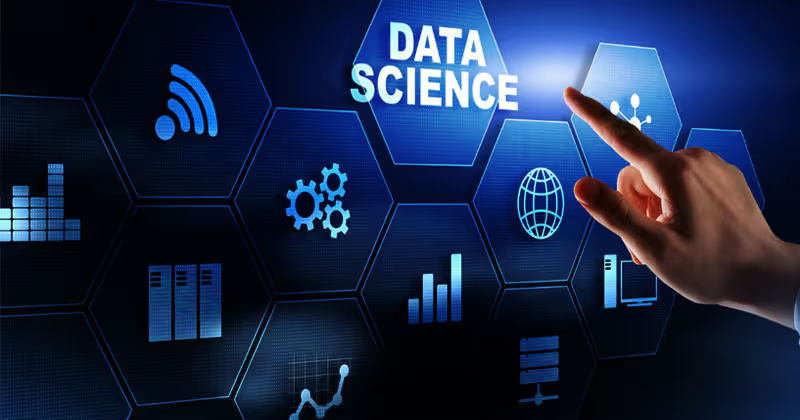In the modern world, data is the foundation of decision-making. Whether it's optimizing business processes, predicting trends, or uncovering insights, data science plays a critical role. To harness its potential, data scientists rely on a vast array of data science tools. These tools facilitate tasks such as data manipulation, visualization, and predictive modeling. This blog dives into some of the most popular tools, programming languages, and techniques, shedding light on their applications and benefits.
What Are Data Science Tools?
Data science tools are software and platforms that help professionals analyze, visualize, and extract meaningful information from complex data sets. These tools vary in functionality, from simple data visualization tools to advanced platforms designed for predictive modeling, numerical computing, and data management. They simplify the processes of analyzing data and help organizations make informed decisions.

Popular Data Science Tools and Their Applications
1. Jupyter Notebook
Jupyter Notebook is a powerful and user-friendly tool favored by data scientists for its flexibility. It allows users to combine code, visuals, and text in a single document, making it ideal for data manipulation, visualization, and sharing insights.
- Features : some text
- Interactive coding environment.
- Supports multiple programming languages like Python and R.
- Ideal for creating dynamic reports and tutorials.
2. Apache Spark
For handling large-scale data, Apache Spark is unmatched. As a distributed analytics engine, it excels at processing massive datasets quickly.
- Applications : some text
- Real-time analytics.
- Machine learning workflows.
- Seamless integration with cloud-based platforms.
3. Scikit-Learn
Scikit-Learn is one of the most widely used libraries for machine learning in Python. It simplifies tasks like classification, regression, and clustering, making it an essential tool for predictive modeling.
- Key Features : some text
- Extensive documentation and tutorials.
- Compatible with numerical computing libraries like NumPy and pandas.
- Ideal for beginners and experts alike.
4. Business Intelligence Tools
Business intelligence tools like Tableau and Power BI provide advanced data visualization capabilities. These platforms are crucial for analyzing and presenting data insights to stakeholders.
- Strengths : some text
- Intuitive drag-and-drop interfaces.
- Integration with diverse data sets.
- Real-time dashboards for decision-making.
5. Natural Language Processing (NLP) Tools
For analyzing text-based data, NLP tools like NLTK and spaCy are indispensable. They help extract insights from textual data, enabling applications such as chatbots, sentiment analysis, and automated content generation.
The Role of Programming Languages in Data Science
Programming languages are the backbone of data science. Here are some of the most popular languages used in the field:
Python
Python’s versatility and extensive libraries make it the go-to language for data science. Its ecosystem includes tools like NumPy, pandas, and matplotlib, which simplify data manipulation and visualization.
R
Known for its statistical capabilities, R is ideal for tasks like hypothesis testing and advanced data visualizations. It’s widely used in academia and research.
SQL
SQL (Structured Query Language) is essential for data management. Data scientists use it to query and retrieve information from relational databases, making it indispensable for working with structured data sets.
Cloud-Based Solutions for Data Science
The rise of cloud-based platforms has transformed how data science is conducted. Cloud solutions provide scalability, flexibility, and cost-efficiency, making them essential for modern analytics. Popular platforms include:
Google Cloud AI and ML
Google’s suite of tools offers pre-trained machine learning models and scalable infrastructure, enabling businesses to build and deploy powerful analytics workflows.
Amazon Web Services (AWS)
AWS provides tools for storage, computing, and data analysis, such as SageMaker, which simplifies building and deploying machine learning models.
Microsoft Azure
Azure’s machine learning and AI tools integrate seamlessly with its business applications, offering end-to-end solutions for organizations of all sizes.
Data Visualization Tools
Data visualizations play a critical role in communicating insights effectively. Here are some popular tools:
Matplotlib and Seaborn
These Python libraries offer customizable plots, making them ideal for creating publication-quality visualizations.
Tableau
A leading visualization tool, Tableau’s intuitive interface allows users to create interactive charts and dashboards without extensive coding knowledge.
Power BI
Microsoft’s Power BI is a robust tool for real-time data analysis and visualization. It’s particularly popular for business intelligence tasks.
Data Manipulation and Management
Efficient handling of data sets is crucial for successful analytics. Here are tools and techniques for data manipulation and management:
Pandas
A Python library, pandas provides data structures and functions for cleaning, organizing, and analyzing structured data.
Excel
While basic, Excel remains a popular tool for quick data analysis and visualization tasks, especially among non-technical users.
Hadoop
For organizations dealing with vast amounts of unstructured data, Hadoop offers a scalable and distributed data storage solution.
Advanced Techniques: Predictive Modeling and Numerical Computing
Predictive modeling and numerical computing are at the heart of data science. They enable businesses to forecast outcomes and optimize strategies. Key tools include:
TensorFlow and PyTorch
These libraries are leading platforms for developing and deploying machine learning models, including deep learning.
MATLAB
MATLAB excels in numerical computing and is widely used in engineering and scientific research.
Conclusion
The landscape of data science tools is vast and continually evolving. From user-friendly platforms like Jupyter Notebook to advanced tools like Apache Spark, data professionals have a wealth of options to analyze data, create data visualizations, and build predictive models. Selecting the right tools depends on your specific needs, whether it’s managing large data sets, conducting natural language processing, or leveraging cloud-based solutions.
By staying informed about the latest developments in tools and techniques, data scientists and data engineers can remain at the forefront of innovation, driving impactful insights and solutions.
FAQs: Data Science Tools
What are the essential tools for data science?
Key tools include Python (pandas, NumPy, scikit-learn), R, SQL, Jupyter Notebooks, TensorFlow / PyTorch, data visualization tools (e.g. Matplotlib, Seaborn, Tableau), and big data tools (Spark, Hadoop).
Which IDEs / environments do data scientists use?
Common environments include Jupyter Notebooks, VS Code, PyCharm, RStudio, and cloud notebooks like Google Colab.
Are there GUI tools for data science (no coding)?
Yes. Tools like RapidMiner, Orange, KNIME, and IBM Watson Studio let you build workflows with minimal coding.
What big data tools are relevant for data science?
Popular tools include Apache Spark, Hadoop, Hive, and Kafka for handling large datasets, ETL, and scalable analytics.
How do I choose the right data science tool?
Choose based on your needs: dataset size, model complexity, team tools, ecosystem, integration, support, and what stage of workflow (exploration, modeling, deployment).


.avif)






